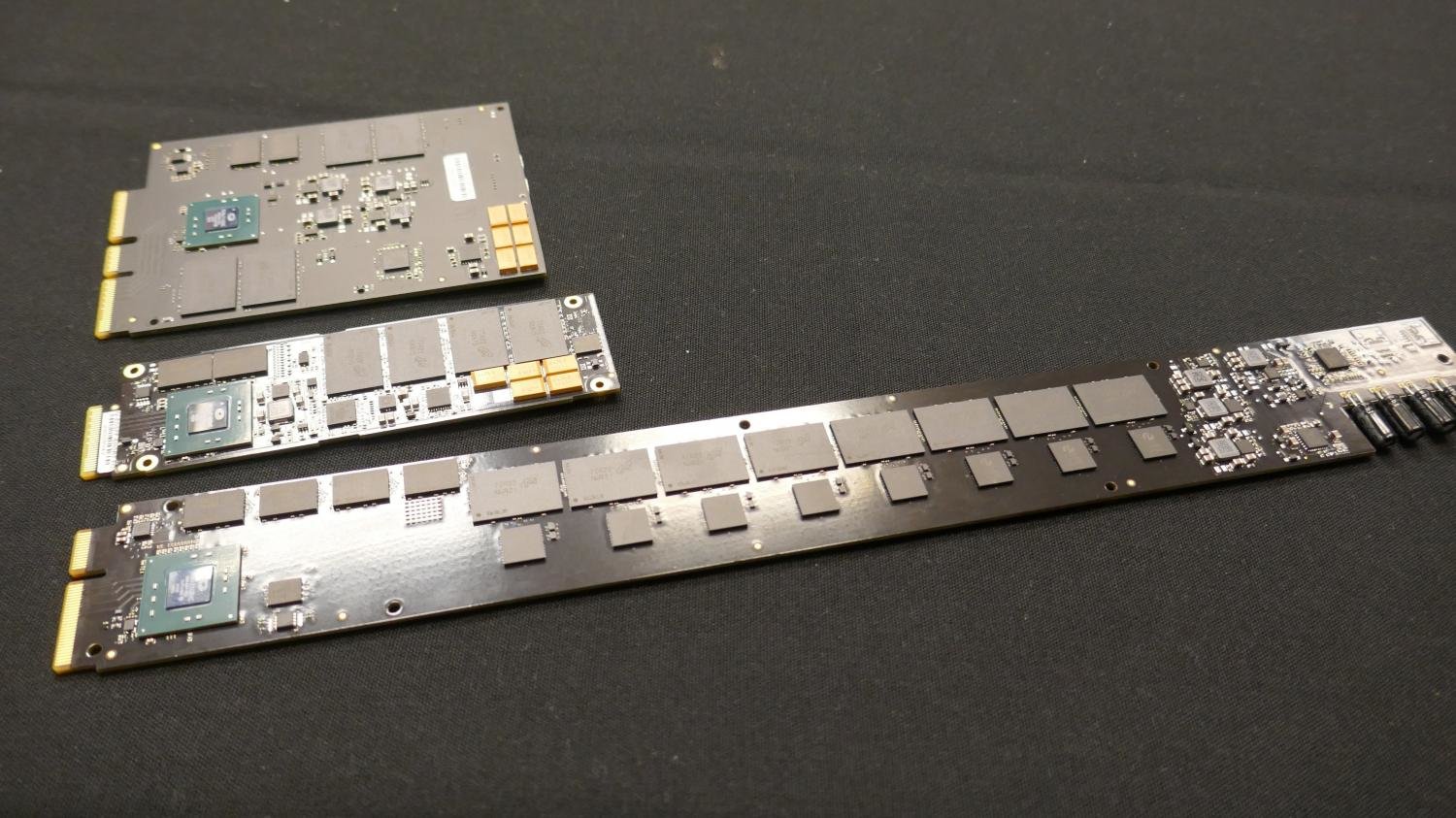I'd focus on ones that perform better than an M.2 NVMe drive, but still offer (recent) support for Windows 10 or your favorite Linux distro, as those two properties often aren't a given.
Meanwhile, at the enterprise market, the storage is going in all sorts of places due to the possibilities with form factors and PCIe.
The "ruler" form factor aka EDSFF E1.Long:
[URL unfurl="true"]https://www.servethehome.com/hands-on-with-the-1u-half-petabyte-supermicro-edsff-server/[/URL]
The more classic form factor aka EDSFF E3.Short:
[URL unfurl="true"]https://www.servethehome.com/kioxia-edsff-ssd-adding-momentum-with-new-development/[/URL]
E1.Long:
[ATTACH=full]692[/ATTACH]
E3:
[ATTACH=full]691[/ATTACH]
- E3 long double width (E3L 2x)
- E3 long single width (E3L)
- E3 short double width (E3S 2x)
- E3 short single width (E3S)
If I'm correct, the locking bracket (first image) is being standardized as well, which explains the screw holes on the front of the E3 drive models.
E3S, E1S and E1L:

Also using different connectors. These connectors are fully intercompatible, using PCIe x1 up to x16 per device:
[ATTACH=full]693[/ATTACH]
AIC : Add In Card or what we commonly refer to as expansion cards or PCIe cards.
All this can be found on: https://edsffspec.org